|
|---|

Bedi at the "Successful Women in Management" (SWIM) conference, 2007 |
| Born | 9 June 1949
Amritsar, Punjab, India |
|---|
| Nationality | Indian |
|---|
| Alma mater | Panjab University Chandigarh
University of Delhi
IIT Delhi |
|---|
| Occupation | IPS Officer (1972–2012)
Social activist |
|---|
| Spouse(s) | Brij Bedi |
|---|
| Awards | Suryadatta National Award
2007
United Nations Medal
2004
Ramon Magsaysay Award
1994
President’s Gallantry Award
1979 |
|---|
Kiran Bedi, has been India’s first and highest (woman) ranking officer who joined the Indian Police Service in 1972. Her expertise includes more than 35 years of creative and reformative policing and prison management.
She worked with the United Nations in New York as the Police Advisor to the Secretary General, in the Department of Peace Keeping Operations. She represented India in International forums on crime prevention, drug abuse, police and prison reforms and women's issues.
She holds a Law, Masters, Doctorate degree. She is also a Nehru Fellow (post doctoral) -- Been a National and an Asian Tennis champion. She has addressed audiences at the American, British, European, Indian Universities, Corporate and Civil Society groups.
She is a recipient of the prestigious Ramon Magsaysay Award (also called the Asian Nobel Prize), and several other national and international decorations, Dr. Bedi has a biography, I Dare, anchors radio and television shows and is a columnist with leading newspapers and magazines.
She is the founder of two NGOs, Navjyoti and India Vision Foundation, which reach out to thousands of under -served children, women and men in the areas of education, vocational skills, environment, counseling, and health care to the urban and rural poor ,including prisoners and policemen's ' children. Currently her NGOs are running B-Schools in partnership with Universities and Vocational Institute to Indian youth.
Kiran Bedi has been voted as India's most admired (THE WEEK 2002), most trusted woman in India. (Readers Digest, March 2010, Navbharat Times 2012), MSN Most Admired Indian Female Icon 2011 and amongst top 10 women Icons of 2013 by The Economic Times.
A nonfiction feature film on Dr Bedi's life entitled Yes, Madam Sir has been produced by an Australian film maker, Megan Doneman. The film was adjudged the "Best Documentary" at Santa Barbara International Film Festival. It has been receiving standing ovation in most of its screenings around the world. May visitwww.kiranbedifilms.com
She has been in the vanguard of a nationwide India Against Corruption Movement lead by Anna Hazare. The movement finally got Lokpal Act.
Kiran is an author of several books, namely It's Always Possible, What Went Wrong, As I See, Broom and Groom and Uprising 2011..
For more information may visit her website www.kiranbedi.com or tweet @thekiranbedi Kiran Bedi, one of the most celebrated and widely known police officers who ever served the Indian Police Force, was born in Amritsar, Punjab state, India. She is the second of the four daughters of her parents, Prakash Lal Peshawaria and Prem Lata Peshawaria.
EducationShe did her schooling from the Sacred Heart Convent School, Amritsar, where she joined the National Cadet Corps (NCC). She also took up tennis, a passion she inherited from her father, who himself was a talented tennis player. Later, she obtained her B.A. in English (Hons.) (1964-68) from the Government College for Women, Amritsar. She then earned a Master's degree (1968-70) in Political Science from Punjab University, Chandigarh, topping the University.
Even while in active service in the Indian Police, she continued her educational pursuits, and obtained a Law degree (LLB) in 1988 from Delhi University, Delhi. In 1993, she did her Ph.D. from Social Sciences from the Department of Social Sciences, the Indian Institute of Technology, New Delhi, where the topic of her thesis was 'Drug Abuse and Domestic Violence'.
Kiran Bedi won the Junior National Lawn Tennis Championship in 1966, the Asian Lawn Tennis Championship in 1972, and the All-India Interstate Women's Lawn Tennis Championship in 1976, besides this she also won the all-Asian tennis champion, and had won the Asian Ladies Title at the age of 22.
CareerShe began her career as a Lecturer in Political Science (1970-72) at Khalsa College for Women, Amritsar, India. In July 1972, she joined the Indian Police Service. On her web site, she states that she joined the police service "because of my urge to be outstanding".
She served in a number of tough assignments ranging from Traffic Commissoner of New Delhi, Deputy Inspector General of Police in insurgency prone Mizoram, Advisor to the Lieutanent Governor of Chandigarh, Director General of Narcotics Control Bureau and also on a United Nations deputation, where she became the Civilian Police Advisor in the United Nations peacekeeping department, and for which she was awarded with the UN medal. She is popularly referred to as Crane Bedi for towing the Prime Minister Indira Gandhi's car for a parking violation (the PM was on tour of United States then).
Kiran Bedi influenced several decisions of the Indian Police Service, particularly in the areas of control over narcotics, traffic management, and VIP security. During her stint as the Inspector General of Prisons, Tihar Jail (Delhi) (1993-1995), she instituted a number of reforms in the management the prison, and initiated a number of measures such as detoxification programs, yoga, vipassana meditation, redressing of complaints by prisoners and literacy programs. For this she not only won the 1994 Ramon Magsaysay Award, but was also awarded the 'Jawaharlal Nehru Fellowship', to write about the work done at Tihar Jail.
She was last appointed as Director General of India's Bureau of Police Research and Development.
In May 2005, she was awarded an honorary degree of Doctor of Law In recognition of her "humanitarian approach to prison reforms and policing".
On 27th November 2007, she had expressed her wish to take Voluntary Retirement from job to take up new challenges in life.On 25th December 2007, Government of India decided to relieve Bedi, who was holding the post of the director general of Bureau of Police Research and Development, from her duties immediately.
"Yes Madam, Sir" a documentary of Kiran Bedi's life, directed by Australian Megan Doneman, premiered at the Toronto International Film Festival September 5, 2008.
After retirement Kiran Bedi launched a new website, www.saferindia.com, on January 3, 2007. The motto of this website is to help people whose complaints are not accepted by the local police. This project is undertaken by the non-profit, voluntary and non-government organisaton, India Vision Foundation.
ContributionsNavajyoti (which literally means New Enlightenment), set up in 1987, and India Vision Foundation, set up in 1994, are the two major voluntary organizations established by her with the objectives of improving the condition of the drug addicts and the poor people. Her efforts have won national and international recognition, and her organizations was awarded the Serge Soitiroff Memorial Award for drug abuse prevention by the United Nations.
She also started one site named http://www.saferindia.com to log complaint regarding any crime if the police at the concerned area denies to accept complaint. Then the NGO behind this site mails complaint to the DGP of concerned area.This mail can also be used as the legal document in case of filing a case in the court of judgement.
She has written her autobiography, 'I Dare. It's Always Possible', which was released in 1998.
Personal lifeKiran Bedi married Brij Bedi in 1972, the year she started her career in the Indian Police Service (IPS), and three years later, in 1975, they had daughter Saina. Among her other three siblings, Shashi is settled in Canada, Reeta is a Tennis player and writer, and Anu is also Tennis player.
Bibliography * Its Always Possible: Kiran Bedi. Oct 1999, Indra Publishing. ISBN 0958580537.
* "What Went Wrong?", collection of The fortnightly column written by Kiran Bedi.
* The Motivating Bedi by Kiran Bedi.
AwardsKiran Bedi has received a number of Awards, including the following:
* President's Gallantry Award (1979)
* Women of the Year Award (1980)
* Asia Region Award for Drug Prevention and Control (1991)
* Magsaysay Award (1994) for Government Service
* Mahila Shiromani Award (1995)
* Father Machismo Humanitarian Award (1995)
* Lion of the Year (1995)
* Joseph Beuys Award (1997)
* Pride of India (1999)
* Mother Teresa Memorial National Award for Social Justice (2005)




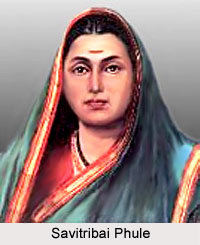
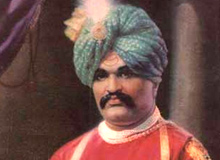 King Shahu Chhatrapati was considered as a true democrat and social reformer. He was an invaluable gem in the history of Kolhapur. Shahu was associated with many progressive activities in the society including education for women. He was greatly influenced by the contributions of social reformer Jyotiba Phule. Primary education to all regardless of caste and creed was one of the significant moves of the King.
King Shahu Chhatrapati was considered as a true democrat and social reformer. He was an invaluable gem in the history of Kolhapur. Shahu was associated with many progressive activities in the society including education for women. He was greatly influenced by the contributions of social reformer Jyotiba Phule. Primary education to all regardless of caste and creed was one of the significant moves of the King.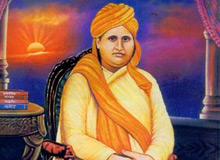 Dayanand Saraswati was a reformer and believed in pragmatism. He preached against many rituals of the Hindu religion such as idol-worship, caste by birth, animal sacrifices and restrictions of women from reading Vedas. He was not only a great scholar and philosopher but also a social reformer and a political thinker. Dayanand Saraswati was responsible for the revival of the Indian educational system by bringing together pupil from different strata of the society under one umbrella, that is, classroom.
Dayanand Saraswati was a reformer and believed in pragmatism. He preached against many rituals of the Hindu religion such as idol-worship, caste by birth, animal sacrifices and restrictions of women from reading Vedas. He was not only a great scholar and philosopher but also a social reformer and a political thinker. Dayanand Saraswati was responsible for the revival of the Indian educational system by bringing together pupil from different strata of the society under one umbrella, that is, classroom.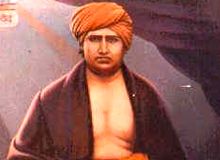 The 10 principles of Arya Samaj
The 10 principles of Arya Samaj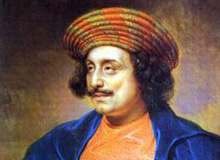 Raja Ram Mohan Roy is considered as the pioneer of modern Indian Renaissance for the remarkable reforms he brought in the 18th century India. Among his efforts, the abolition of the sati-pratha-a practice in which the widow was compelled to sacrifice herself on the funeral pyre of her husband-was the prominent. His efforts were also instrumental in eradicating the purdah system and child marriage. In 1828, Ram Mohan Roy formed the Brahmo Samaj, a group of people, who had no faith in idol-worship and were against the caste restrictions. The title 'Raja' was awarded to him by Mughal emperor Akbar, the second in 1831 when Roy visited England as an ambassador of the King to ensure that Bentick's regulation of banning the practice of Sati was not overturned.
Raja Ram Mohan Roy is considered as the pioneer of modern Indian Renaissance for the remarkable reforms he brought in the 18th century India. Among his efforts, the abolition of the sati-pratha-a practice in which the widow was compelled to sacrifice herself on the funeral pyre of her husband-was the prominent. His efforts were also instrumental in eradicating the purdah system and child marriage. In 1828, Ram Mohan Roy formed the Brahmo Samaj, a group of people, who had no faith in idol-worship and were against the caste restrictions. The title 'Raja' was awarded to him by Mughal emperor Akbar, the second in 1831 when Roy visited England as an ambassador of the King to ensure that Bentick's regulation of banning the practice of Sati was not overturned.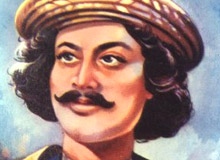 Ram Mohan viewed education as a medium to implement the social reforms. So, in 1815, Ram Mohan came to Calcutta and the very next year, started an English College by putting his own savings. He was well aware that the students should learn the English language and scientific subjects and that's why he criticized the government's policy of opening only Sanskrit schools. According to him, Indians would lag behind if they do not get to study modern subjects like Mathematics, Geography and Latin. Government accepted this idea of Ram Mohan and also implemented it but not before his death. Ram Mohan was also the first to give importance to the development of the mother tongue. His 'Gaudiya Byakaran' in Bengali is the best of his prose works. Rabindranath Tagore and Bankimchandra also followed the footsteps of Ram Mohan Roy.
Ram Mohan viewed education as a medium to implement the social reforms. So, in 1815, Ram Mohan came to Calcutta and the very next year, started an English College by putting his own savings. He was well aware that the students should learn the English language and scientific subjects and that's why he criticized the government's policy of opening only Sanskrit schools. According to him, Indians would lag behind if they do not get to study modern subjects like Mathematics, Geography and Latin. Government accepted this idea of Ram Mohan and also implemented it but not before his death. Ram Mohan was also the first to give importance to the development of the mother tongue. His 'Gaudiya Byakaran' in Bengali is the best of his prose works. Rabindranath Tagore and Bankimchandra also followed the footsteps of Ram Mohan Roy.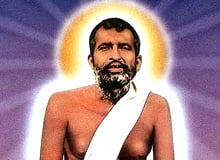 Sri Ramakrishna Paramhansa was a popular saint of India. He had a strong faith in the existence of god. He regarded every woman of the society, including his wife, Sarada, as holy mother. Swami Vivekananda was one of the prominent disciples of Ramakrishna, who later formed the Ramakrishna Mission.
Sri Ramakrishna Paramhansa was a popular saint of India. He had a strong faith in the existence of god. He regarded every woman of the society, including his wife, Sarada, as holy mother. Swami Vivekananda was one of the prominent disciples of Ramakrishna, who later formed the Ramakrishna Mission.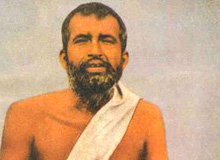 Sri Ramakrishna was the most 'rational mystic'. With scientific precision he put forward in most simple terms, as parables and stories, the eternal truth regarding God and God realization. He talked about God only after directly experiencing the reality of God. To get rid of the thought that he belonged to a higher brahmanical caste, he began to eat food cooked by the shudras or lower-caste.
Sri Ramakrishna was the most 'rational mystic'. With scientific precision he put forward in most simple terms, as parables and stories, the eternal truth regarding God and God realization. He talked about God only after directly experiencing the reality of God. To get rid of the thought that he belonged to a higher brahmanical caste, he began to eat food cooked by the shudras or lower-caste.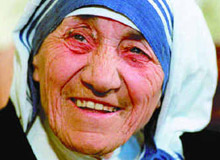 Mother Teresa was a true follower of humanity. Many people considered Mother as the "reincarnated form of Lord Jesus". Mother Teresa devoted her entire life in serving the needy and abandoned people of the society. Although her mission started in India, she succeeded in bringing the people of all societies under one roof, i.e. humanity. Besides the Nobel Peace Prize, she was also awarded with Ramon Magsaysay and Padmashri Award for her social works.
Mother Teresa was a true follower of humanity. Many people considered Mother as the "reincarnated form of Lord Jesus". Mother Teresa devoted her entire life in serving the needy and abandoned people of the society. Although her mission started in India, she succeeded in bringing the people of all societies under one roof, i.e. humanity. Besides the Nobel Peace Prize, she was also awarded with Ramon Magsaysay and Padmashri Award for her social works.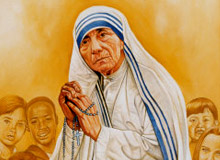 The Missionaries of Charity was formed by Mother Teresa in 1950. Today, it consists of over 4,000 nuns. The organization, so far, has expanded its wings to over 100 countries. The objective of the Missionaries of Charity is to provide care and support to the sick, mentally ill, aged, victims of incorrigible diseases, and abandoned children. The Missionaries of Charity has opened around 20 homes in Calcutta including a school for street children.
The Missionaries of Charity was formed by Mother Teresa in 1950. Today, it consists of over 4,000 nuns. The organization, so far, has expanded its wings to over 100 countries. The objective of the Missionaries of Charity is to provide care and support to the sick, mentally ill, aged, victims of incorrigible diseases, and abandoned children. The Missionaries of Charity has opened around 20 homes in Calcutta including a school for street children.

